Easel
イーゼル
Easel
CATEGORIES
When making a sketch or pictorial composition, an artist uses an easel to hold the support medium, carton, or other similar object in place at a comfortable height.
Although there are many types of easels designed for different sizes of support media and various artistic settings, the most common easels for indoor use stand on three legs (two in front and one in back). The part of the easel that holds the support medium is the “frame tray,” a horizontal piece that can be moved up and down with screws and/or tenons. Easels are made of different materials, such as wood, iron, and aluminum, and manufactured in a variety of sizes, from shorter products that artists can use sitting down to taller products that let artists work standing up or with large support media. There are also lightweight outdoor easels with collapsible legs. Large-scale easels capable of holding support media of size 100 or higher, meanwhile, use squared timber for their foundations and posts to provide sufficient support and stability. Finally, there are also easels with wheels, easels with adjustable inclination, easels with levers for adjusting frame tray height, and more.
When drawing a model or motif, situate yourself so that your subject is about 45 degrees to your left and place your easel directly in front of you. This setup keeps your head movements to a minimum and, if you are right-handed, your drawing hand out of view. If you are left-handed, situate yourself so that your subject is about 45 degrees to your right. Once you are in the right position, extend the back leg of the easel to give yourself a comfortable inclination and then adjust the height and level of the frame tray. The center of the support medium should be slightly below eye level, and the easel should be less than an arm’s length away. This is just the ideal setup, however; you might need to make adjustments based on light conditions and the specific working environment.
The easel, whose name comes from the Latin word “asinus” (donkey), has been in use since the earliest days of pictorial composition. Although the exact origins of the easel are unknown, easel-like objects appear in ancient Egyptian reliefs. Easels gradually evolved into their current basic form in the 19th century. The invention of paint tubes made it easier for artists to work outdoors, a development that gave rise to the outdoor easel.
When using a three-legged (tripod) easel, note that the easel can fall down if the front legs and back leg are too far apart. You can stop this from happening by tying the front and back legs together with string or using clasps to keep them from opening too wide.
Easels are available for purchase at art supply stores.
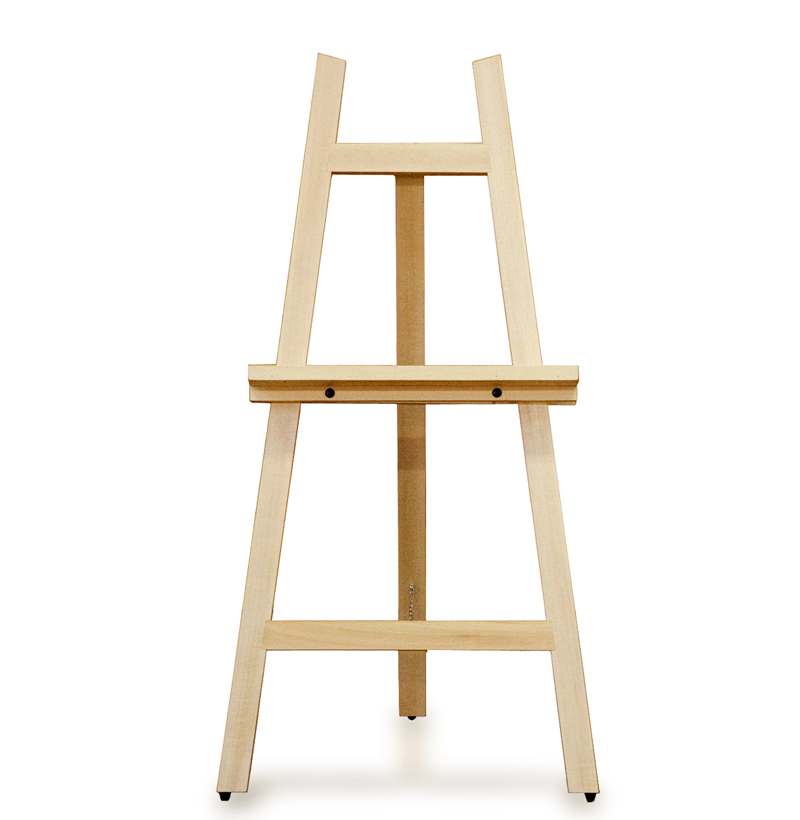 Indoor easel
Indoor easel Indoor easels in use at Musashino Art University
Indoor easels in use at Musashino Art University Outdoor easel
Outdoor easel Large-scale easel
Large-scale easel- An indoor easel ready for use
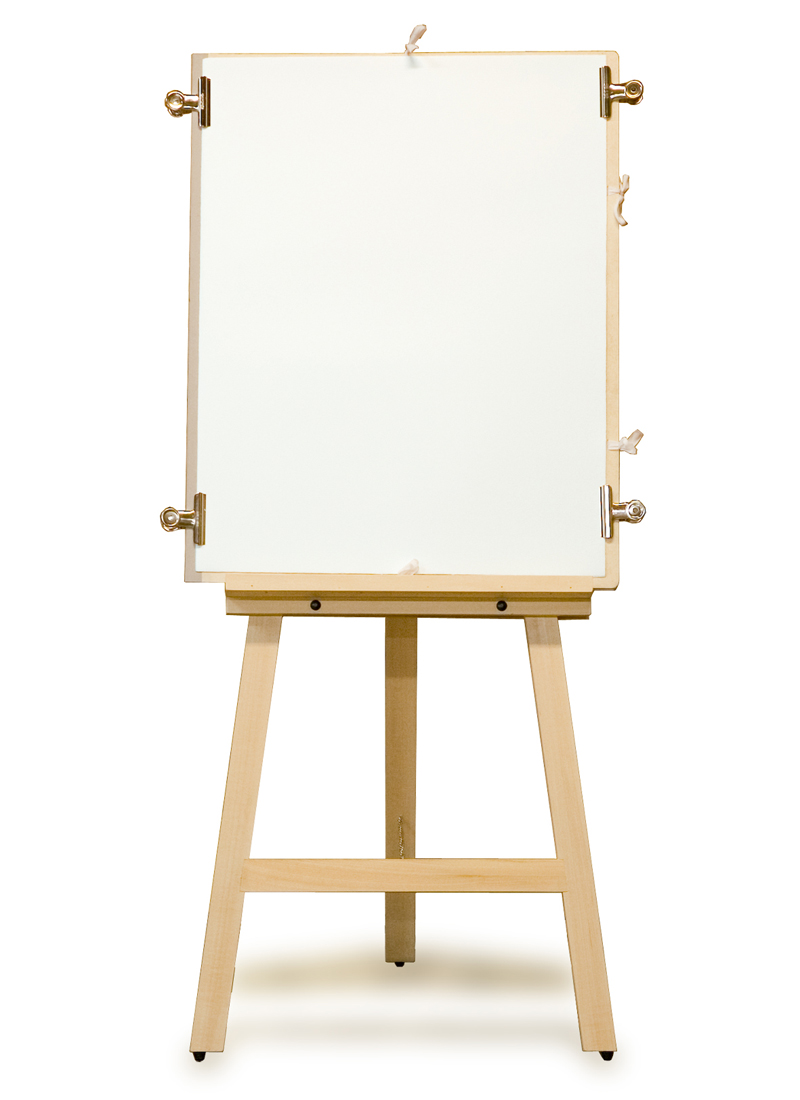
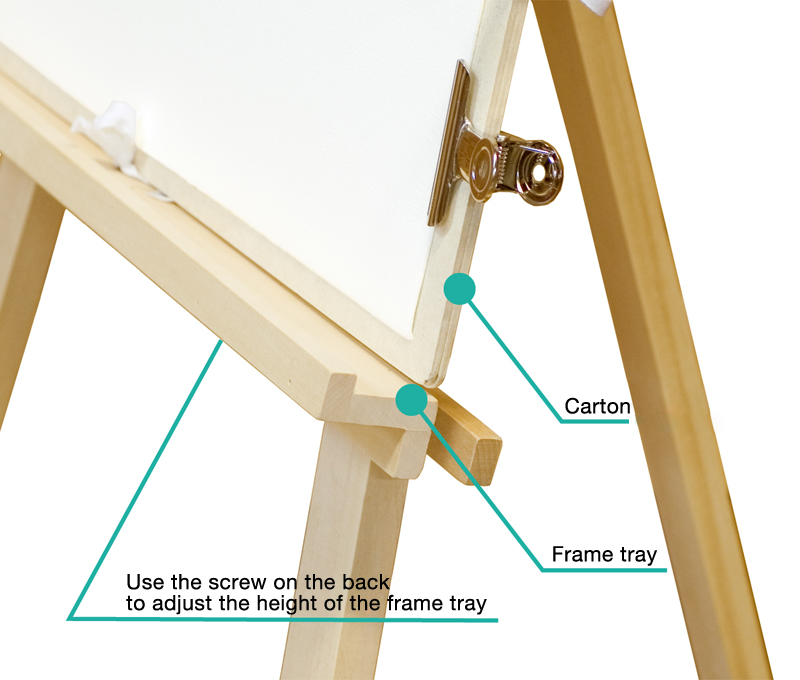
 Use string or similar items to tie the legs together and prevent the easel from falling down
Use string or similar items to tie the legs together and prevent the easel from falling down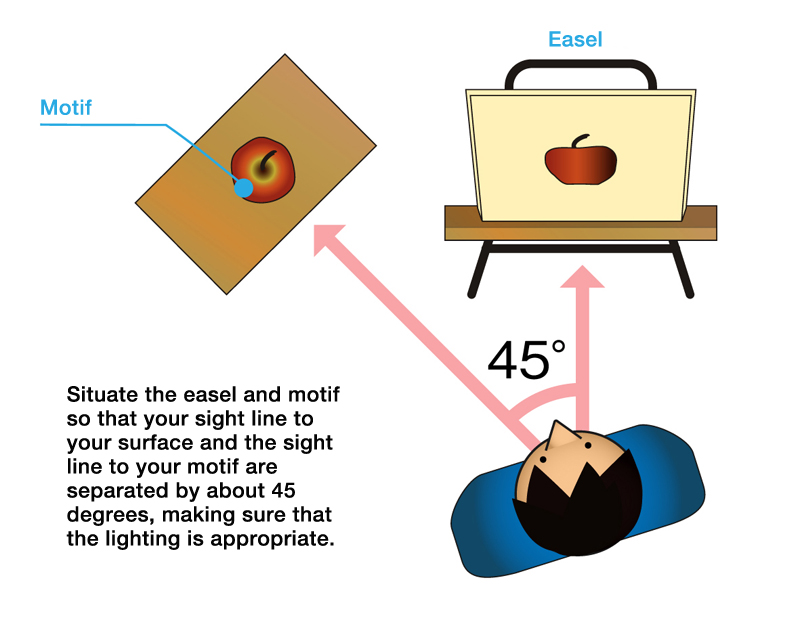 Positioning the motif and easel (for a right-handed artist)
Positioning the motif and easel (for a right-handed artist)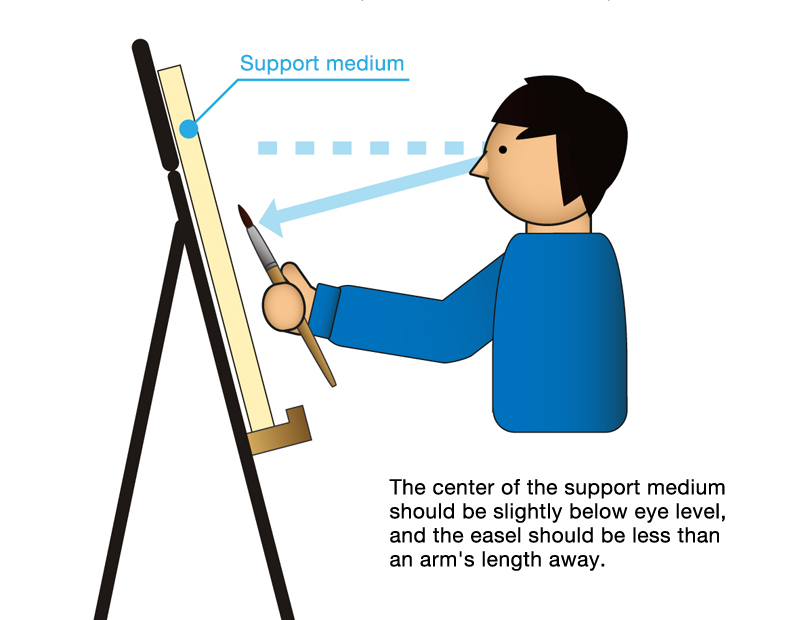 Positioning the support medium (setting the easel to an optimal height)
Positioning the support medium (setting the easel to an optimal height)
